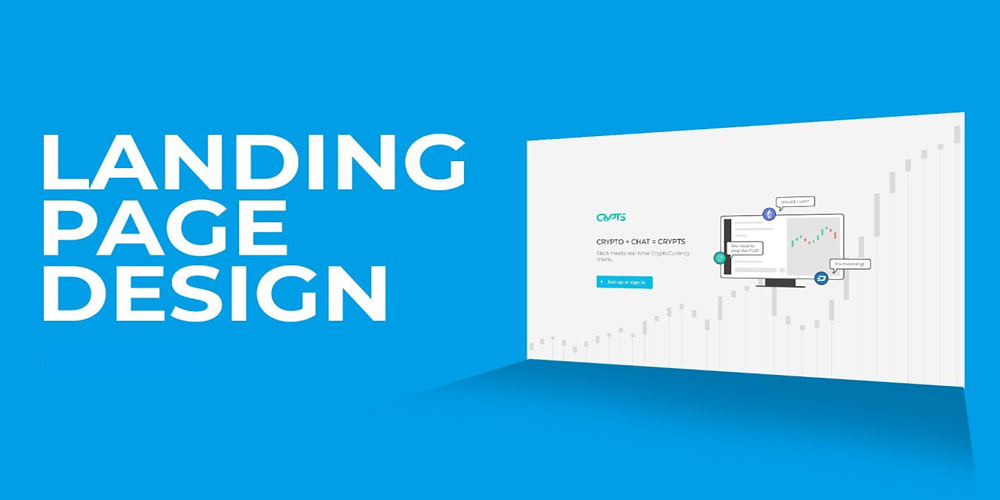
Landing Page Optimisation: Best Practices.
Landing pages are a crucial element of an effective digital marketing strategy; that is when they’re properly optimised.
A well-written landing page will convert website visitors into leads, and all while delighting them with the diverse range of content available. There’s a common misconception that writing landing page copy – and creating landing pages in general – is just a case of putting together a few words and popping a page up. However, the fact is that the process of creating a landing page that actually does what it’s designed to do – bring in leads – is a little more complex than that, and takes more time and thought.
Wondering what it takes to ensure that you’re able to achieve landing page best practice and don’t end up with a page that fails to achieve its goals? The guide below should help you to do that – have a read, take note, and implementing the suggestions in your company’s landing page strategy.
What is landing page optimisation?
Let’s start with the basics – what exactly is landing page optimisation? Simply put, landing page optimisation refers to the process of enhancing and improving various elements on your business’s landing pages to help build and increase conversations.
It may be that you already have a landing page in place – a landing page that perhaps you were extremely proud of when you first had it created – but you’re no longer sure if it is working as effectively as it should be. Or, you may have recently had a new landing page designed and aren’t quite sure how to ensure that it has been properly optimised.
A key factor to be aware of when it comes to landing page optimisation is the fact that the chances are your landing page won’t be perfect when first published. Usually, you would create a landing page, add the content, and then, as you look at the analysed data, make any necessary tweaks to help ensure a better converting landing page.
Identify potential problems before optimising landing pages
When it comes to optimising landing page content, it’s a good idea to consider identifying any problems before choosing to optimise the content. The process for identifying landing page problems is to start by identifying any specific problems plaguing the landing page – ideally, these should be problems that are contributing to the landing page’s low conversion rates.
A simple yet effective way to determine this is by using a heat map to see where people are clicking on your landing page. This should highlight the area of which that seems to be of the most interest to your website visitors – you may find that they are focusing on an area or element that lacks importance, in which case you could opt to edit this area. Once you know what the area is that seems to get the most traction, you can then opt to put the most important features in that corner.
Track website visitors’ behaviour
When it comes to determining what is and what is not working on your website’s landing pages, heat maps aren’t the only tool at your disposal. There is a wide range of options that you could consider taking advantage of, including opting to track your website visitors’ behaviour. Wondering how you can do that? Utilising tools such as scroll maps, confetti maps, overlay reports, and list reports, for instance, are a few ways that you can monitor your website visitors’ behaviour.
Take a scroll map, for instance, a scroll map can show you where scrolling actions have occurred on a page. If you notice areas of white or blue on the page, this means that this is where visitors have left the page, whereas areas of red, orange and yellow show that visitors have stopped to have a look.
What are some landing page optimisation best practices?
Be clear
When it comes to boosting your landing page conversion rates, aim to make sure that your landing page content perfectly appeals to your target demographic. What you want to do is ensure that when a customer visits your landing page, they have a positive experience – you want to make sure that they feel appreciated and inspired. Take the goal of your customers’ into account, and use that goal to create a great landing page concept.
Incorporate heading tags
It’s also important to incorporate heading tags into your landing page content. A heading tag is used to provide the page visitor with an insight into what the focus of the page is and what it contains; title tags are also important for search engines like Google. Title tags can be effectively optimised for search engines using SEO techniques. Keywords are a vital aspect of incorporating heading tags into your landing page strategy – if you want to see results you need to get the keywords right. These keywords need to be properly researched and effectively implemented into the title of the pages that you want to rank – ideally these should be added at the start of the title tag.
Add meta tag data
Meta tags are a form of code that provides information about a landing page in the HTML code – this is called ‘metadata’. While this data is not visible on the page itself, it’s incorporated into the back end of the landing page is read and used by search engines like Google and their web crawlers to help the page rank better.
Simplify your page
You might think that having a simple landing page isn’t a good move to make, however, this couldn’t be further from the truth. A simple landing page removes the clutter from your visitors and makes it easier for the concept of the landing page to be easy to visualise. You want to ensure that your website visitors are focusing on your business’s call to action.
Utilise contrasting colours
Some of the best landing pages utilise a combination of contrasting colours – you want to ensure that your landing page makes an impact on anyone who visits it.
Keep the most important info at the top
It’s important to make sure that the most important information is listed at the top of the landing page. You will find that readers don’t always read to the very bottom of a landing page, which is why you want to make sure that the important information is near the top of the page, as that way it won’t get missed.
Keep call to action buttons straightforward
A call to action button is a vital part of landing page copy, and it’s important that these buttons are presented in a simple and easy to navigate way. You need to ensure that your landing page buttons are easy to spot and clearly portray the message that they are there to get across to web page visitors.
Get the copy right
If there’s one thing that a landing page should be, it’s well-written. A landing page is a fantastic opportunity to show off your amazing copywriting skills, so make sure to take full advantage and aim to wow your readers.
If you need help with your landing page optimisation and the best practices that could help your online project succeed, then give Direct Submit then call on 0845 2722350 or visit our website to see some of the latest website design projects we have been involved in.







